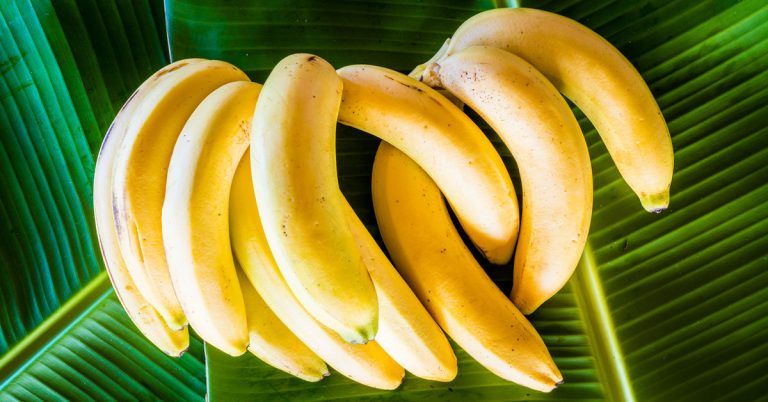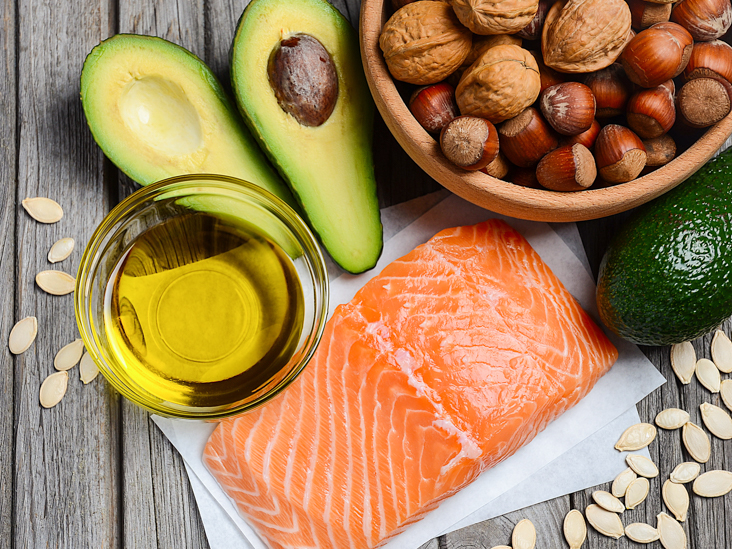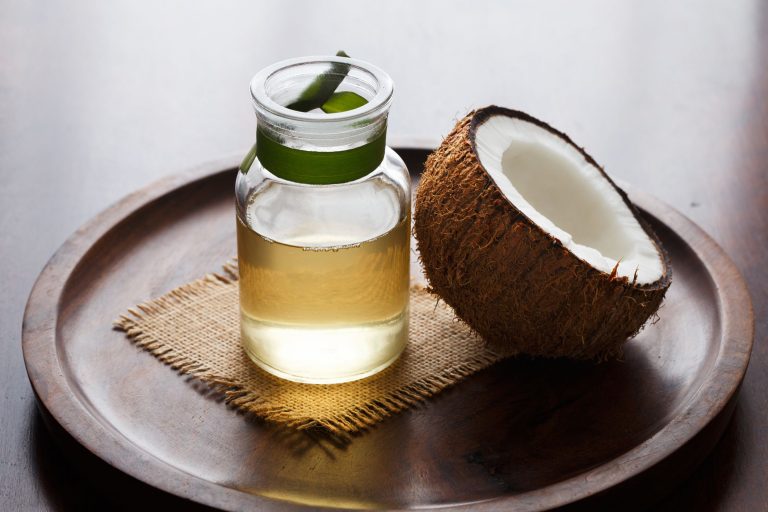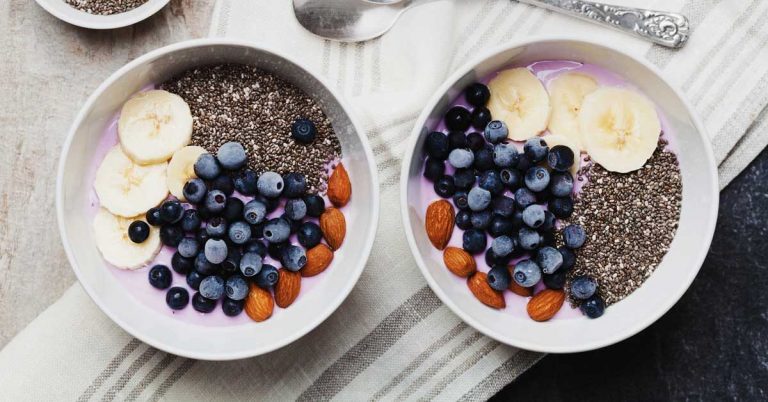Many people feel tired or rundown at some point during the day. A lack of energy could affect your daily activities and make you less productive.
Perhaps not surprisingly, the type and quantity of food you eat play essential roles in determining your energy levels during the day.
Even though all foods give you energy, some foods contain nutrients that could help increase your energy levels and maintain your alertness and focus throughout the day.
Here’s a list of 27 foods that have been proven to help promote energy levels.

Bananas may be one of the best foods for energy. They’re an excellent source of complex carbs, potassium, and vitamin B6, all of which can help boost your energy levels (1).
Fatty fish like salmon and tuna are good sources of protein, fatty acids, and B vitamins, making them great foods to include in your diet.
A serving of salmon or tuna provides you the recommended daily amount of omega-3 fatty acids and vitamin B12 (2).
Omega-3 fatty acids have been shown to reduce inflammation, which is a common cause of fatigue (3).
In fact, some studies determined that taking omega-3 supplements could decrease fatigue, especially in cancer patients and those recovering from cancer (4).
Furthermore, vitamin B12 works with folate to produce red blood cells and help iron work better in your body. Optimal levels of red blood cells and iron can reduce fatigue and increase energy (5).
Brown rice is a very nutritious food. Compared with white rice, it’s less processed and retains more nutritional value in the form of fiber, vitamins, and minerals.
One-half cup (50 grams) of brown rice contains 2 grams of fiber and provides a large portion of your recommended daily intake (RDI) of manganese, a mineral that helps enzymes break down carbs and proteins to generate energy (6, 7).
Additionally, thanks to its fiber content, brown rice has a low glycemic index. Therefore, it could help regulate blood sugar levels and promote steady energy levels throughout the day.
Aside from being delicious, sweet potatoes are a nutritious source of energy for those looking for an extra boost.
A 1-cup (100-gram) serving of sweet potatoes could pack up to 25 grams of complex carbs, 3.1 grams of fiber, 25% of the RDI for manganese, and a whopping 564% of the RDI for vitamin A (8).
Thanks to sweet potatoes’ fiber and complex carb content, your body digests them slowly, which provides you with a steady supply of energy (9).
Coffee might be the first food you’d think to consume when you’re looking for an energy boost.
It’s rich in caffeine, which can quickly pass from your bloodstream into your brain and inhibit the activity of adenosine, a neurotransmitter that quiets the central nervous system (10).
As a result, the production of epinephrine — a hormone that stimulates the body and brain — increases.
Even though coffee only provides two calories per cup, its stimulatory effects can make you feel alert and focused.
It’s not recommended to consume over 400 mg of caffeine, or about 4 cups of coffee, per day.
Eggs are not only a tremendously satisfying food but also full of energy that can help fuel your day.
They’re packed with protein, which can give you a steady and sustained source of energy.
Additionally, leucine is the most abundant amino acid in eggs, and it’s known to stimulate energy production in several ways (11).
Leucine can help cells take in more blood sugar, stimulate the production of energy in the cells, and increase the breakdown of fat to produce energy (11).
Moreover, eggs are rich in B vitamins. These vitamins help enzymes perform their roles in the process of breaking down food for energy (12).
Apples are one of the most popular fruits in the world, and they’re a good source of carbs and fiber.
A medium-sized apple (100 grams) contains about 14 grams of carbs, 10 grams of sugar, and up to 2.1 grams of fiber (13).
Due to their rich content of natural sugars and fiber, apples can provide a slow and sustained energy release (14).
Furthermore, apples have a high antioxidant content. Research has shown that antioxidants may slow the digestion of carbs, so they release energy over a more extended period of time (15).
Lastly, it’s recommended to eat apples whole to reap the benefits of the fiber in their skin.
Water is essential for life. It’s involved in many cellular functions, including energy production (16).
Not drinking enough water may lead to dehydration, which can slow bodily functions, leaving you feeling sluggish and tired (17).
Drinking water could give you a boost of energy and help fight feelings of fatigue.
You can avoid dehydration by drinking water even if you’re not thirsty. Try to drink water regularly throughout the day.
Dark chocolate has a higher cocoa content than regular or milk chocolate.
The antioxidants in cocoa have been shown to have many health benefits, such as increasing blood flow throughout your body (18).
This effect aids the delivery of oxygen to the brain and muscles, which improves their function. This can be especially helpful during exercise (19).
Additionally, the increase in blood flow produced by antioxidants in cocoa could help reduce mental fatigue and improve mood (20).
Dark chocolate also contains stimulatory compounds, such as theobromine and caffeine, which have been shown to enhance mental energy and mood (21).
Yerba maté is a drink made from the dried leaves of a plant native to South America. It has been shown to have many health benefits (22).
Yerba maté contains antioxidants and caffeine. A regular 8-ounce cup can offer about 85 mg of caffeine, which is similar to the amount in a small cup of coffee (22).
The caffeine in yerba maté promotes the production of the hormone epinephrine, which increases energy. However, unlike other stimulants, yerba maté does not seem to affect blood pressure or heart rate (23).
Animal research has suggested that yerba maté may enhance mental focus and mood (24).
Goji berries have been used in Chinese medicine for centuries due to their multiple benefits.
Besides being packed with antioxidants, vitamins, and minerals, this fruit is known to be a good source of fiber (25).
Research has suggested that goji berry juice could provide antioxidant protection (26).
Additionally, goji berries are rich in fiber. A 1-ounce (28-gram) serving provides 2 grams of fiber. This could help slow digestion and release energy slowly (14, 26).
Goji berries are easy to enjoy mixed in yogurt, smoothies, baked goods, and sauces. Or you can simply eat them raw.
Quinoa is a seed that’s popular for its high protein, carb, and dietary fiber content, as well as its many vitamins and minerals.
Even though this superfood is high in carbs, it has a low glycemic index, which indicates that its carbs are absorbed slowly and can provide a sustained energy release (28).
Additionally, quinoa is rich in manganese, magnesium, and folate (27).
Oatmeal is a whole grain cereal that could provide you long-lasting energy.
It contains beta glucan, a soluble fiber that forms a thick gel when combined with water. The presence of this gel in the digestive system delays stomach emptying and the absorption of glucose into the blood (29, 30).
Furthermore, oats are rich in vitamins and minerals that help the energy production process. These include B vitamins, iron, and manganese (29, 31).
The combination of all these nutrients makes oatmeal a perfect food for sustained energy release.
Yogurt is an excellent snack to fuel your day.
The carbs in yogurt are mainly in the form of simple sugars, such as lactose and galactose. When broken down, these sugars can provide ready-to-use energy.
Additionally, yogurt is packed with protein, which helps slow the digestion of carbs, thereby slowing the release of sugars into the blood (32).
Hummus is made with chickpeas, sesame seed paste (tahini), oil, and lemon. The combination of these ingredients makes hummus a good source of energy (34).
The chickpeas in hummus are a good source of complex carbs and fiber, which your body can use for steady energy (35).
In addition, the sesame seed paste and oil in hummus contains healthy fats. These ingredients are also helpful at slowing the absorption of carbs, which helps you avoid blood sugar spikes (36).
You can enjoy hummus as a dip for veggies or in combination with other dishes, such as sandwiches or salads.
Edamame beans can be an easy and satisfying pick-me-up snack.
They’re relatively low in calories but offer significant amounts of protein, carbs, and fiber. Just 1 cup of edamame beans can pack up to 27 grams of protein, 21 grams of carbs, and about 12 grams of fiber (37).
Additionally, they have high amounts of vitamins and minerals, such as folic acid and manganese, that can help increase energy in different ways (37).
Folic acid works with iron to promote energy and fight fatigue and anemia, while manganese helps generate energy from the breakdown of carbs and protein (38, 39).
Lastly, edamame beans contain high amounts of molybdenum, a mineral that acts as a stimulus for enzymes and assists in the breakdown of nutrients for energy (40).
Aside from being a great and inexpensive source of protein, lentils are a good source of nutrients and help boost energy levels.
Lentils are legumes that are rich in carbs and fiber. One cup of cooked lentils provides up to 36 grams of carbs and about 14 grams of fiber (41).
Additionally, lentils can increase your energy levels by replenishing your stores of folate, manganese, zinc, and iron. These nutrients assist in cellular energy production and the breakdown of nutrients for the release of energy (42).
Thanks to all of all their significant health benefits, avocados are considered to be a superfood.
For example, they’re rich in healthy fats, B vitamins, and fiber. About 84% of the healthy fats in avocados come from monounsaturated and polyunsaturated fatty acids (43, 44).
These healthy fats have been shown to promote optimal blood fat levels and enhance the absorption of nutrients. They can also be stored in the body and used as energy sources (45).
Additionally, the fiber in avocados accounts for 80% of their carb content, which can help maintain steady energy levels (46).
Oranges are famous for their high vitamin C content. One orange can provide as much as 106% of the RDI for vitamin C (47).
Additionally, oranges contain antioxidant compounds that can protect against oxidative stress (48).
Research has shown that oxidative stress could promote feelings of fatigue. Therefore, the antioxidant protection provided by compounds in oranges may help decrease fatigue (49, 50).
In fact, one study showed that 13 women who consumed 17 ounces (500 mL) of orange juice and did 1 hour of aerobic training 3 times per week for 3 months experienced decreases in muscle fatigue and improvements in physical performance (51).
Strawberries are another good energy-boosting fruit.
They can provide carbs, fiber, and sugars that can enhance your energy levels. One cup of strawberries provides 13 grams of carbs, 3 grams of fiber, and 100% of the RDI for vitamin C (50).
In addition to helping fight inflammation, the antioxidants in strawberries may help fight fatigue and give you energy (48, 51, 52).
Strawberries are delicious in many recipes, such as smoothies, parfaits, or salads.
Seeds, such as chia seeds, flax seeds, and pumpkin seeds, could also increase your energy levels.
These seeds are generally high in plant-based omega-3 fatty acids. Low levels of omega-3 fatty acids have been linked to increased inflammation and fatigue (53).
Moreover, seeds are a good source of fiber and protein. The fiber in seeds contributes to the slow digestion of their nutrients, resulting in a steady, sustained release of energy (54).
Beans are rich in nutrients and a great source of natural energy.
Even though there are hundreds of types of beans, their nutrient profiles are very similar. They’re a rich source of carbs, fiber, and protein (54).
Beans are digested slowly, which helps maintain stable blood sugar levels and gives you steady energy. Additionally, beans contain antioxidants that can help fight inflammation and promote energy (56).
Black beans and black-eyed peas are among the most famous kinds of beans. These beans are good sources of folic acid, iron, and magnesium, which are involved in energy production and aid the delivery of energy to every cell in your body (57).
Green tea is famous for its long list of health benefits.
It has a high concentration of powerful antioxidants that can help prevent oxidative stress and inflammation (51).
Similarly to coffee, green tea contains caffeine, which can increase your energy levels. However, green tea also contains a compound called L-theanine (58).
L-theanine can moderate the effects of caffeine, such as anxiety and the jitters, and it produces a smoother boost of energy (59, 60).
Moreover, green tea can be a good energy booster for physical activity, as it can decrease fatigue by increasing the breakdown of fat and release of the hormone norepinephrine (61, 62).
Nuts can be a great snack that’s packed with nutrients to promote energy.
Most nuts, including almonds, walnuts, and cashews, are known for their high calorie density and abundance of proteins, carbs, and healthy fats.
Walnuts, in particular, are also high in omega-3 and omega-6 fatty acids, as well as antioxidants that can increase energy levels and help with inflammation and antioxidant protection (63).
Additionally, these nuts provide decent amounts of carbs and fiber for a steady and sustained energy boost (64).
Nuts also contain other vitamins and minerals, such as manganese, iron, B vitamins, and vitamin E. These can help increase energy production and decrease tiredness (65).
Popcorn can be an excellent low calorie, energizing snack.
It’s high in carbs and fiber, which can make it very satisfying and a good option for an energy-boosting snack (66).
A 1-cup (8-gram) serving of air-popped popcorn provides fiber and carbs, providing a steady release of energy (67).
Popcorn can be a healthy food when it’s cooked with wholesome ingredients using the air-pop cooking method.
Leafy green vegetables like spinach and kale are excellent sources of nutrients that promote energy.
They’re high in iron, calcium, magnesium, potassium, and vitamins A, C, E, and K. Additionally, they’re packed with folic acid, fiber, and antioxidants 68).
Fatigue is one of the most common symptoms of iron deficiency (69).
Leafy green vegetables are excellent sources of iron to replenish your body’s stores, as well as vitamin C to enhance the absorption of iron in your body (70).
Furthermore, leafy green vegetables may enhance the formation of nitric oxide, which helps your blood vessels widen for better blood flow throughout your body (71, 72).
Beets have gained popularity recently due to their ability to improve energy and stamina.
Studies have shown that beetroot may improve blood flow due to its antioxidant content (73, 74).
Nitrates, which are compounds found in high amounts in beetroot and beetroot juice, help increase nitric oxide production and improve blood, allowing for increased oxygen delivery to tissues. This effect may increase energy levels, especially during athletic performance (75).
Additionally, beets are packed with carbs, fiber, and sugar for a sustained energy boost.
An abundant variety of foods can help boost your energy.
Whether they’re packed with carbs for readily available energy, or fiber and protein for a slower release of energy, these foods can help increase your power and stamina.
Additionally, many of these foods contain significant amounts of other nutrients, including vitamins, minerals, and antioxidants.
All of these compounds are involved in the production of energy within your cells, and they all provide many other health benefits.
If you want more energy, incorporating these foods into your diet is a great place to start.










